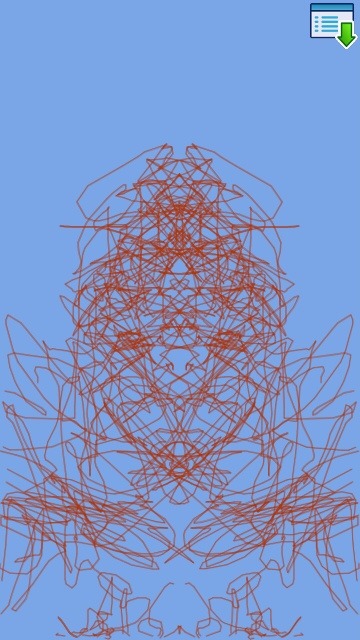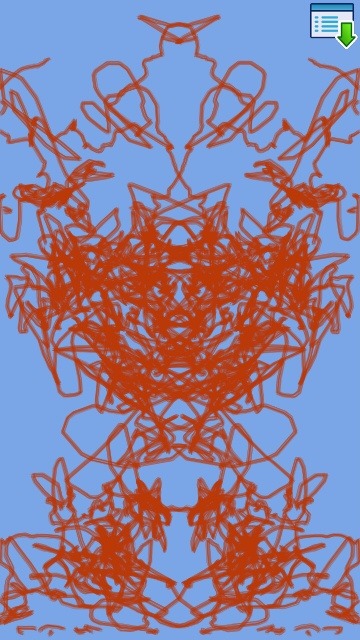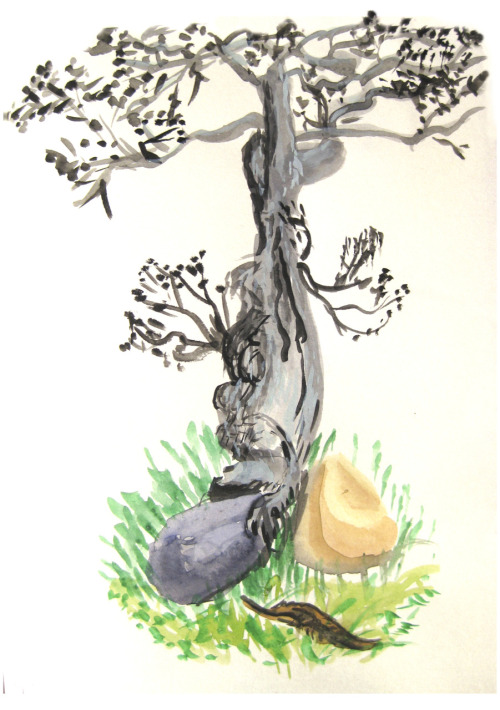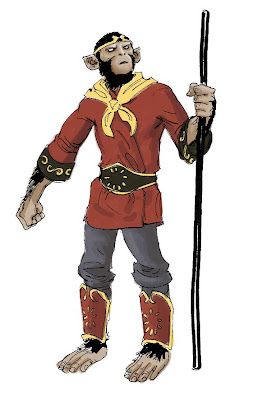 |
| originally intended to be an abstract... |
 |
| mixed media fun... |
 |
| background mix of papers and acrylic.... |
 |
| a tangerine haired mermaid decided she'd like to be the featured attraction of the *experiment*... |
 |
| originally intended to be an abstract... |
 |
| mixed media fun... |
 |
| background mix of papers and acrylic.... |
 |
| a tangerine haired mermaid decided she'd like to be the featured attraction of the *experiment*... |
Stanley Milgram was born on the 15 August 1933. In the early 1960s he carried out a series of experiments which had a not just a significant impact on the field of psychology, but had enormous influence in popular culture. These experiments touched on many profound philosophical questions concerning autonomy, authority, and the capacity of individuals to do the right thing in difficult circumstances.
The post Stanley Milgram: Life and legacy appeared first on OUPblog.
It was a simple request: “Try and put the fun back into microbiology”. I was about to write a new practical course for first year students, and apparently there had been complaints that microbiology is just another form of cookbook chemistry. Discussions showed that they liked the idea of doing their own experiments without a pre-determined outcome. Of course, with living microorganisms, safety must be a major concern, and some control was needed to prevent hazardous surprises, but “fun” and safety are not mutually exclusive.
The post Is the history of science still relevant? appeared first on OUPblog.
Over the next few weeks, Paul Gluck, co-author of Physics Project Lab, will be describing how to conduct various different Physics experiments. In his third post, Paul explains how to investigate and experiment with rubber bands…
Rubber bands are unusual objects, and behave in a manner which is counterintuitive. Their properties are reflected in characteristic mechanical, thermal and acoustic phenomena. Such behavior is sufficiently unusual to warrant quantitative investigation in an experimental project.
A well-known phenomenon is the following. When you stretch a rubber band suddenly and immediately touch your lips with it, it feels warm, the rubber band gives off heat.
Unlike usual objects, which expand when heated, a rubber band contracts when you heat it. To see this, suspend a rubber band vertically and attach a weight to it. Measure carefully its stretched length by a ruler placed along it. Now blow hot air on the rubber band from a hair dryer, thus heating it. Measure the new length and ascertain that the band contracted.
The behaviour is also strange when you try to see how the length of a rubber band depends on whether you load or unload it. To see this, suspend a rubber band, affix to its bottom a cup to hold weights, as shown.
Now increase the weights in the cup in measured equal increments, and for each weight measure the length, and the change in length from the unstretched state, of the rubber band by a meter stick laid along it.

For each weight, wait two minutes before the new length measurement Record your results. Now reverse the process: unload the weights one by one, and measure the resulting lengths.
For each amount of weight, will the rubber band have the same length when loading as when unloading? No, the behavior is much more subtle and is shown in the graph, in which one path results when loading, the other when unloading. This effect is known as hysteresis, and is related to energy losses in the band.
What happens to the sound of a plucked rubber band?
Try it: pluck a rubber band while gradually stretching it, thereby increasing the tension in it. In the process the plucking produces a pitch which is practically unchanged. But if you keep the length of a rubber band constant but increase the tension in it somehow, the pitch will change. You can keep the length constant, while changing the tension, as follows: fix one end of the rubber band or strip. Pass the free end over a little pulley, affix a cup to that end to hold weights, then putting increasing amounts of weight into the cup will increase the tension in the rubber band, while keeping its length constant.

Unless you have perfect pitch and can detect small differences in pitch, you may need more sensitive means to detect the variations. One way is to have a tiny microphone nearby that will pick up the sound produced when you pluck the band. This sound is then passed on to a software (on the Web search for ‘free acoustic spectrum analyzer’) which analyzes the sounds and tells what frequencies are present in the plucking sound.
Finally, how does a flat thin rubber strip transmit light? Take a very thin flat rubber strip and start stretching it. Now shine a strong spotlight close to one side of the strip and measure the intensity of the light which is transmitted on to its other side, while the strip is stretched. You would expect that as the strip is stretched it becomes thinner so more light should get through, right? Wrong: for some region of stretching the transmitted light intensity may actually decrease.
If you have access to a physics lab and modern sensors you can set up an apparatus which will allow to explore in depth the whole range of phenomena to greater accuracy.
Have you tried this experiment at home? Tell us how it went to get the chance to win a free copy of the Physics Project Lab book! We’ll pick our favourite descriptions on 9th January.
The post Physics Project Lab: How to investigate the phenomena surrounding rubber bands appeared first on OUPblog.
Over the next few weeks, Paul Gluck, co-author of Physics Project Lab, will be describing how to conduct various different Physics experiments. In his second post, Paul explains how to build your own drinking bird and study its behaviour in varying ways:
You may have seen the drinking bird toy in action. It dips its beak into a full glass of water in front of it, after which it swings to and fro for a while, returns to drink some more, and so on, seemingly forever. You can buy one on the internet for a few dollars, and perform with it a fascinating physics project.
But how does it work?
A dyed volatile liquid partially fills a tube fitted with glass bulbs at both ends. The lower end of the tube dips into the liquid in the bottom bulb, the body. The upper bulb, the head, holds a beak which serves two functions. First, it shifts the center of mass forward. Secondly, when the bird is horizontal its head dips into a beaker of liquid (usually water), so that the felt covering soaks up some of the liquid. As the moisture in the felt evaporates it cools the top bulb, and some of the vapor within it condenses, thereby reducing the vapor pressure of the internal liquid below that in the bottom bulb. As a result, liquid is forced upward into the head, moving the center of mass forward. The top-heavy bird tips forward and the beak dips into the water. As the bird tips forward, the bottom end of the tube rises above the liquid surface in the bulb; vapor can bubble up from the bottom end of the tube to the top, displacing some liquid in the head, making it flow back to the bottom. The weight of the liquid in the bulb will restore the device to the vertical position, and so on, repeating the cycle of motion. The liquid within is warmed and cooled in each cycle. The cycle is maintained as long as there is water to wet the beak.

The rate of evaporation from the beak depends on the temperature and humidity of the surroundings. These parameters will influence the period of the motion. Forced convection will strongly enhance the evaporation and affect the period. Such enhancement will also be created by the air flow caused by the swinging motion of the bird.
Here are some suggestions for studying the behaviour of the swinging bird, at various degrees of sophistication.
Measure the period of motion of the bird and the evaporation rate, and relate the two to each other. You can do this also when water in the beaker is replaced by another liquid, say alcohol. To measure the evaporation rate the bird may be placed on a sensitive electronic balance, accurate to 0.001 g. A few drops of the external liquid may be applied to the felt of the head by a pipette. Measure the time variation of the mass of this liquid, and that of the period of motion, without replenishing the liquid when the bird bows into its horizontal position. Allow for the time spent in the horizontal position. Establish experimentally the time range for which the evaporation may be taken as constant.
Explore how forced convection, say from a small fan directed at the head, changes the rate of evaporation, and thereby the period of the motion.
The effects of humidity on the period may be observed as follows: build a transparent plexiglass container with a small opening. Place the bird inside. Vary the internal humidity by injecting controlled amounts of fine spray into the enclosed space. You can do this by using the atomizer of a perfume bottle.
By taking a video of the motion and analyzing it frame-by-frame using a frame grabber, measure the angle of inclination of the bird to the vertical as a function of time.
Do away altogether with the beaker of liquid in front of the bird and show that all it needs for oscillatory motion is the presence of a difference of temperature between the bottom and the top, a temperature gradient. To do this, paint the lower bulb and the tube black, and shine a flood lamp on them at controlled distances, while shielding the head, so as to create a temperature gradient between head and body. Such heating increases the vapor pressure within, causing liquid to be forced up into the head and making the toy dip, just as for the cooling of the head by evaporation. It will then be interesting to study how the time elapsed before the first swing and the period of motion are related to the effective surface being illuminated (how would you measure that?), and to the effective energy supplied to the bird which itself will depend on the lamp’s distance from the bird
There are many more topics that can be investigated. As one example, you could follow the time dependence of the head and stem temperatures in each cycle by means of tiny thermocouples, correlating these with the angular motion of the bird. Heat enters the tube and is transported to the head, and this will be reflected in a steady state temperature difference between the two. Both head and tube temperatures may vary during a cycle, and these variations can then be related to heat transfer from the surroundings and evaporation enhancement due to the convection generated by the swinging motion. But for this, and other more advanced topics, you would have to have access to a good physics laboratory, obtain guidance from a physicist, and be willing to learn some heat and thermodynamics as well as the mechanics of rotational motion, in addition to investing more time in the project.
Have you tried this experiment at home? Tell us how it went to get the chance to win a free copy of the Physics Project Lab book! We’ll pick our favourite descriptions on 9th January.
Featured image credit: ‘Drinking bird photo’ by Christopher Zurcher, CC-by-2.0, via Flickr
The post Physics Project Lab: How to make your own drinking bird appeared first on OUPblog.
Over the next few weeks, Paul Gluck, co-author of Physics Project Lab, will be describing how to conduct various Physics experiments. In this first post, Paul explains how to investigate motion on a cycloid, the path described by a point on the circumference of a vertical circle rolling on a horizontal plane.
If you are a student or an instructor, whether in a high school or at university, you may want to depart from the routine of lectures, tutorials, and short lab sessions. An extended experimental investigation of some physical phenomenon will provide an exciting channel for that wish. The payoff for the student is a taste of how physics research is done. This holds also for the instructor guiding a project if the guide’s time is completely taken up with teaching. For researchers it seems natural to initiate interested students into research early on in their studies.
You could find something interesting to study about any mundane effect. If students come up with a problem connected with their interests, be it a hobby, some sport, a musical instrument, or a toy, so much the better. The guide can then discuss the project’s feasibility, or suggest an alternative. Unlike in a regular physics lab where all the apparatus is already there, there is an added bonus if the student constructs all or parts of the apparatus needed to explore the physics: a self-planned and built apparatus is one that is well understood.
Here is an example of what can be done with simple instrumentation, requiring no more than some photogates, found in all labs, but needing plenty of building initiative and elbow grease. It has the ingredients of a good project: learning some advanced theory, devising methods of measurements, and planning and building the experimental apparatus. It also provides an opportunity to learn some history of physics.

The challenge is to investigate motion on a cycloid, the path described by a point on the circumference of a vertical circle rolling on a horizontal plane.
This path is relevant to two famous problems. The first is the one posed by Johann Bernoulli: along what path between two points at different heights is the travel time of a particle a minimum? The answer is the brachistochrone, part of a cycloid. Secondly, you can learn about the pendulum clock of Christian Huygens, in which the bob and its suspension were constrained to move along cycloid, so that the period of its swing was constant.
Here is what you have to construct: build a cycloidal track and for comparison purposes also a straight, variable-angle inclined track. To do this, proceed as follows. Mark a point on the circumference of a hoop, lid, or other circular object, whose radius you have measured. Roll it in a vertical plane and trace the locus of the point on a piece of cardboard placed behind the rolling object. Transfer the trace to a 2 cm-thick board and cut out very carefully with a jigsaw along the green-yellow border in the picture. Lay along the profile line a flexible plastic track with a groove, of the same width as the thickness of the board, obtainable from household or electrical supplies stores. Lay the plastic strip also along the inclined plane.
Your cycloid track is ready.

Measure the time taken for a small steel ball to roll along the groove from various release points on the brachistochrone to the bottom of the track. Compare with theory, which predicts that the time is independent of the release height, the tautochrone property. Compare also the times taken to descend the same height on the brachistochrone and on the straight track.
Design a pendulum whose bob is constrained to move along a cycloid, and whose suspension is confined by cycloids on either side of its swing from the equilibrium position. To do this, cut the green part in the above picture exactly into two halves, place them side by side to form a cusp, and suspend the pendulum from the apex of the cusp, as in the second picture. The pendulum string will then be confined along cycloids, and the swing period will be independent of the initial release position of the bob – the isochronous property. Measure its period for various amplitudes and show that it is a constant.
Have you tried this experiment at home? Tell us how it went to get the chance to win a free copy of the Physics Project Lab book. We’ll pick our favourite descriptions on 9th January. Good luck to all entries!
Featured image credit: Advanced Theoretical Physics blackboard, by Marvin PA. CC-BY-NC-2.0 via Flickr.
The post Physics Project Lab: How to build a cycloid tracker appeared first on OUPblog.

The Color of Change: Can Colorful Images Help Solve Social Problems?
I was sorting through my TBF (to be finished) files this morning and came across a little ditty that I’d like to share. I have many files like this one; bits of story ideas, entire chapters that sounded good at the time but fell by the wayside when a more exciting project came along, or things that I never finished researching for one reason or another.
This is only the first page or so of a story’s first draft. There is much more at home that follows this. What I’ve decided to do is ask you if you think I should spend valuable time to finish it. Do you think it could spark enough interest to encourage a reader to turn pages? Can you easily envision possible scenarios for the events hinted at by the writer? Would you be curious enough to turn pages?
I’m taking this step because I have so little invested in this wee sample. I could easily finish it, or, I could ignore it and let it fade into the distance of the past. You tell me how I should treat this prospective story.
As I’ve said, I have little invested in it. I’d much rather have honest opinions than sugar-coated rhetoric that means nothing.
SAGA OF THE FLYING YEEJ
Ever wonder if other people’s lives were punctuated by oddities like yours? Let me tell you; you’re not alone. Take it from the Queen of Weirdness, everyone’s had their lives polka-dotted by those little quirks that have little or no explanation.
During my life I’ve experienced so many oddities that flamed across my reality that many times I felt like I was living an episode of the Twilight Zone. I suppose that’s why I knew I just had to write this small, focused catalog of incidents. I wanted to assure others that just because they’d never seen anything like what had suddenly flipped through their lives didn’t mean it wasn’t possible.
After all, just because someone’s paranoid doesn’t mean that there isn’t someone out to get them, and that’s my motto about weirdness. The Creator put a lot of stuff out there in the heavens and on Earth. You or I could be a little slow on the uptake and missed something along the way. And occasionally that something drops by to introduce itself.
I doubt there’s much in the way of weirdness that I have seen. Take ball lightning, for instance. I was twelve the first time I saw it. Goosebumps coursed down my spine, leaving entire meadows of their offspring on my arms. The thing that caused me the most fright was that it moved when it was observed, took a fancy to certain people in the room, and then gradually faded from sight without emitting a sound.
Now that you’ve had a chance to go through the beginning, what do you think? Please let me know. Is there enough here to create a worthy story or not. Give me your comments with opinions. Don’t be shy.
I was sorting through my TBF (to be finished) files this morning and came across a little ditty that I’d like to share. I have many files like this one; bits of story ideas, entire chapters that sounded good at the time but fell by the wayside when a more exciting project came along, or things that I never finished researching for one reason or another.
This is only the first page or so of a story’s first draft. There is much more at home that follows this. What I’ve decided to do is ask you if you think I should spend valuable time to finish it. Do you think it could spark enough interest to encourage a reader to turn pages? Can you easily envision possible scenarios for the events hinted at by the writer? Would you be curious enough to turn pages?
I’m taking this step because I have so little invested in this wee sample. I could easily finish it, or, I could ignore it and let it fade into the distance of the past. You tell me how I should treat this prospective story.
As I’ve said, I have little invested in it. I’d much rather have honest opinions than sugar-coated rhetoric that means nothing.
SAGA OF THE FLYING YEEJ
Ever wonder if other people’s lives were punctuated by oddities like yours? Let me tell you; you’re not alone. Take it from the Queen of Weirdness, everyone’s had their lives polka-dotted by those little quirks that have little or no explanation.
During my life I’ve experienced so many oddities that flamed across my reality that many times I felt like I was living an episode of the Twilight Zone. I suppose that’s why I knew I just had to write this small, focused catalog of incidents. I wanted to assure others that just because they’d never seen anything like what had suddenly flipped through their lives didn’t mean it wasn’t possible.
After all, just because someone’s paranoid doesn’t mean that there isn’t someone out to get them, and that’s my motto about weirdness. The Creator put a lot of stuff out there in the heavens and on Earth. You or I could be a little slow on the uptake and missed something along the way. And occasionally that something drops by to introduce itself.
I doubt there’s much in the way of weirdness that I have seen. Take ball lightning, for instance. I was twelve the first time I saw it. Goosebumps coursed down my spine, leaving entire meadows of their offspring on my arms. The thing that caused me the most fright was that it moved when it was observed, took a fancy to certain people in the room, and then gradually faded from sight without emitting a sound.
Now that you’ve had a chance to go through the beginning, what do you think? Please let me know. Is there enough here to create a worthy story or not. Give me your comments with opinions. Don’t be shy.
 I shot out an email to a few blogger buddies of mine that are/have self pubbed or are being published with a small, independent publisher.
I shot out an email to a few blogger buddies of mine that are/have self pubbed or are being published with a small, independent publisher.
Thanks to everyone who took time to send some tips. Some of these ladies will also be coming back on Fridays to provide more insight.
I have a huge exciting thing to announce....

Using my phone drawing software (Magic Brush) I came up with another fun sketching activity. I guess I’ll call it Seismosketching.
On a long, bumpy van ride from Hohhot, Inner Mongolia into the Gobi desert I wanted to to pass the time drawing on my phone, but the road was just too rough. I decided that instead of fighting against the bumps and jostles I would use them to draw. More accurately, I guess you could say I let them use me to draw.

All I did was open the new file window and let the bumps choose a background color. Then I opened the brush color palette and let a jostle choose a brush color. Then I put my stylus against some area of the screen and let them both do their thing. I closed my eyes and left my hand loose. Every once in a while I would pick my hand up and move it to a new part of the screen. Other than that, there was no plan and no design on my part. By the last picture (the first one in this series) I tried multiple layers of color and let the drawing go on for a long time.

I think this will be a new ongoing experiment of mine because the bus and car rides here in China are often long and bumpy. Now instead of getting mad at the drivers and road conditions, I’ll team up with them and see what we can create together.

NOTE: I had the program setting on “Mirror” that is why the drawings are so symmetrical.
Add a Comment

I’m pretty noobish with watercoloring my drawings. And, for some reason, I never really tried just watercoloring without line drawing first. Even though I’ve seen plenty of people do such things, I’ve never thought to give it a shot myself until I started admiring the incredible work of these two fantastic art beings (one is MCFC favorite Eleanor Davis). So while out drawing some of the gnarled little “bonsai style” trees, which I like to do here on campus when it is so darn nice out, I decided to give it a shot. Rough, but a passable first effort and encouragement enough to give me the nerve to try some more.
Add a Comment
Rom Harre is Emeritus Professor of Philosophy at Linacre College, Oxford, and Adjunct Professor of Philosophy at Georgetown University, Washington, DC. In his book, Pavlov’s Dogs and Schrodinger’s Cat: Scenes from the Living Laboratory, we get an enlightening look at the use of plants and animals–including humans–in scientific experiments. In the excerpt below we see how dogs were essential to figuring out heart transplants.
By coincidence, two men, one living in the seventeenth century and one in the twentieth, who both used dogs as models and whose work led to major breakthroughs in medicine bore the same name. The first Richard Lower used dogs to perfect blood transfusion techniques, while the second Richard Lower used the same species of animals to perfect heart transplantation methods.
History, as presented in the media and so in popular belief, credits the beginning of heart transplantation techniques to Christiaan Barnard. Digging a little deeper we come across the most successful practitioner of this art, Norman Shumway. However, using dogs as experimental apparatus – as pilot plants- to perfect the surgical techniques required to carry out transplant operations on human beings. Christiaan Barnard did forty-eight trial transplants with dogs before he undertook such an operation with a human being. He acknowledges that what he uses ‘was a technique built on that developed by Shumway and Lower, who had experimented on more than 300 dogs… With their findings joined to mind there was little point in continuing to further sacrifice of animals.’
Richard Lower studied at the Medical School at Cornell but moved for his residency period to the University of Washington in the northwest of the United States. One autobiographic snippet suggests that the American northwest suited his love of the outdoors. Finding things not to his liking there he moved south to Stanford were he could qualify more quickly. Working in very primitive conditions in the training section of the hospital he eventually met up with Norman Shumway and forged a remarkable partnership with him.
Norman Shumway (1923-2006) studied medicine at Vanderbilt University, moving on to a doctorate at the University of Minnesota in 1956. He was appointed as a surgery instructor at Stanford University in 1958, where he remained for the rest of his career. He seems to have been a somewhat paradoxical character. Reticent and wary of publicity, yet he was famous for his witty and jocular conversation, particularly during the course of long and demanding surgical procedures. The persistence with which he pursued his goal of successful himan heart transplantation suggests a dogged streak.
Lower began his experimental programme as an assistant to Shumway working on the techniques for open heart surgery, including the possibility of cooling a living heart so as to stop its beating. Under this condition surgical repair would be greatly facilitated. The heart could then be warmed up and restarted with a fibrillator. Perhaps the heart could be removed completely from the patient’s body for delicate surgical work and replaced when the repair was done. This is the procedure known as ‘auto-transplantation’.
Dogs were already in regular use at Stanford University Medical School for training surgeons. …Lower and Shumway continued their use of dogs as experimental apparatus, pilot plants for the ultimate transfer of the techniques to the human case. Despite his skill in surgery Lower was unable to achieve successful autotransplantation. The reason was simple

I have found that some pens will work well for this type of technique and some don't. The Oil brushes can work as well if they are set with the bristles as far apart as possible. When I really get something that makes sense I'll post a tutorial for anyone who might be interested in trying this in Painter. It will most likely work well in Photoshop if the basic steps are followed.
Create an image and put it on a separate layer.
Add a second layer of all Black over that one and set the option to MULTIPLY.
The use either a scratch board tool or a pen to take away sections of the black layer.
You can reduce the opacity on the black layer so that you can see the image beneath.
Every once in a while I put the opacity on the black layer back to 100 % to check the effect.
After fiddling with the 'paint' job on this for a bit too long - I have decided that I don't really like the effect that I am getting here. What worked quickly and effectively for the Pulpy Punisher seems mired in labourious detail when applied to strip work.
Here is a sneak peak at that page again... very rough (and incomplete) colours this time, not wholly sure that the 'painted' approach is working for me. The script asks for early evening and I've wondered about rendering the whole page as an orangey or sepia tonal thing.
I've had the script for this for a while.
Sinister Dexter - Tart Au Citroen
Originally published in 2000AD prog 1282. I was intending to do this in the style I've been using for all my comic samples...
Mouthwash. Bleach.
What is the hidden link that allows us to associate the three above products together?
Not only do we use these in our everyday strive for hygiene, but they all supposedly kill 99.9% of germs.
Let’s look at that again:
“xxx peppermint mouthwash: Kills germs 99.9%! Buy two now for ….$$$ Yadda Yadda.”
And again:
“Kills Germs 99.9%…”
However, they don’t actually make it clear whether it is the bacteria in our mouth or not.
So therefore, this can be taken several ways:
I might be that one in a thousand :3
What do you think? (: Who knows? It’s a possibility.
Well, more Monkey. I really shouldn't have found this brilliant topic as torturous as it has been.
I think it's a fairly common phenomenon. Given a job/topic that you'd love to do and do well - there is a tendency for the creativity to freeze up on you. A psychological road-block that gets in the way of you and the destination you'd hoped to arrive at. I think you need to keep going though - being a professional dictates that you can't just give up entirely. By taking a couple of detours, you might not end up where you thought you'd like to go, but the journey will have been interesting and you might end up somewhere just as good.
And with that word "journey" in mind. Sun Wukong is the traditional name for the character "Monkey" from 'Journey to the West', an old Chinese legend. Popularized in the 70s by the classic TV show "Monkey Magic" and then again in recent years by Damon Albarn and Jamie Hewlett's stage adaptation.
I'm fairly happy with the treatment and approach to this, albeit a reasonably straight copy of the TV show's. My inked sketch, quickly coloured in photoshop would serve as a character design for a more dynamic martial art style action pose, but time has run out on me, so this will be my submission for DrawerGeeks this time round.
DrawerGeeks' new topic is Monkey. I've had real problems with this - I was originally going to do a monkey killing two birds with one stone - but it didn't have the quirky quality I was looking for. Then I thought "Space Monkey" but something I've seen kept creeping into my mind...
I don't really like this Super-Monkey, conceptually I think it's a bit weak - no nice puns to be had with the name Clark Kent or Kal-El... I think at some low point in the Superman franchise there may have been a Super-Monkey. I thought about doing a strip where I just spoof Superman totally but I'm not that excited about it. If it's not working, move on. So here is the best of the aborted approaches.
I've finished my submission for Scotch Corner and I've had word from Graeme that he'll post it up in tomorrow's guest spot. I probably won't be able to make a posting tomorrow so here is a bit of a teaser...
...and this is a pattern I created for an aborted project that involved a flying carpet. In the Harley Quinn pin-up, I've used the pattern as the pattern on the back of the card, and I have to say, I think it's far more effective as that than it ever felt as a magic carpet design.
I always think of Weaveworld when I think of magic carpets, and I am sure I recall thinking about that book when I was designing this pattern circa 1999 - now that's recycling for you!
Inks for the Dredd I've been working on.
Experimenting with this currently - I may end up inking the background... depends on how some colour roughs go.
The new topic on DrawerGeeks is Dragon.
I'm supposed to be packing the house up for our upcoming move...
...but I found 25 minutes to take part. I'd normally have loved to get all involved doing a lovely fantasy dragon. I nearly drew Bruce Lee, but in the end humour won out, and you have the submission above.
It’s compelling…definitely worth finishing.
That’s one vote for finishing. Thanks, Pen. I’d always thought of this as humor based as well as something that could put a twist in a cat’s tail.